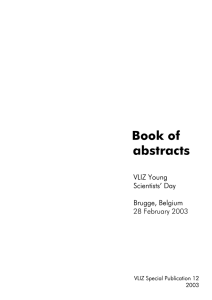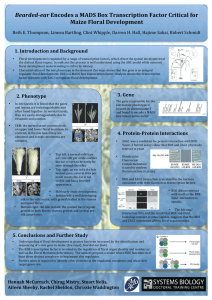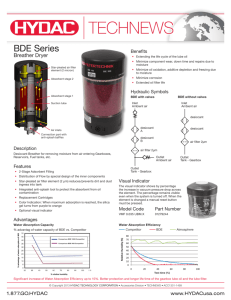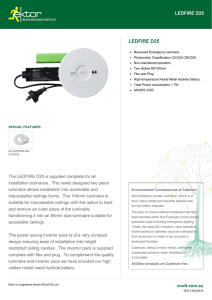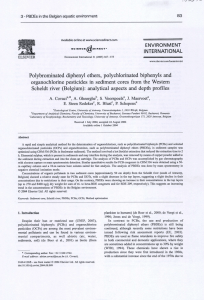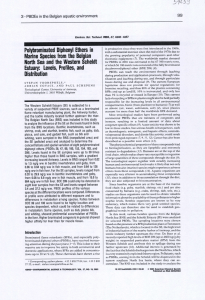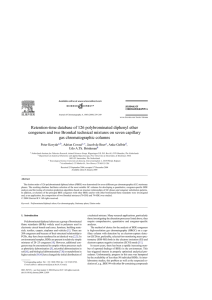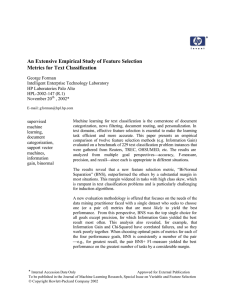Book of abstracts VLIZ Young
advertisement
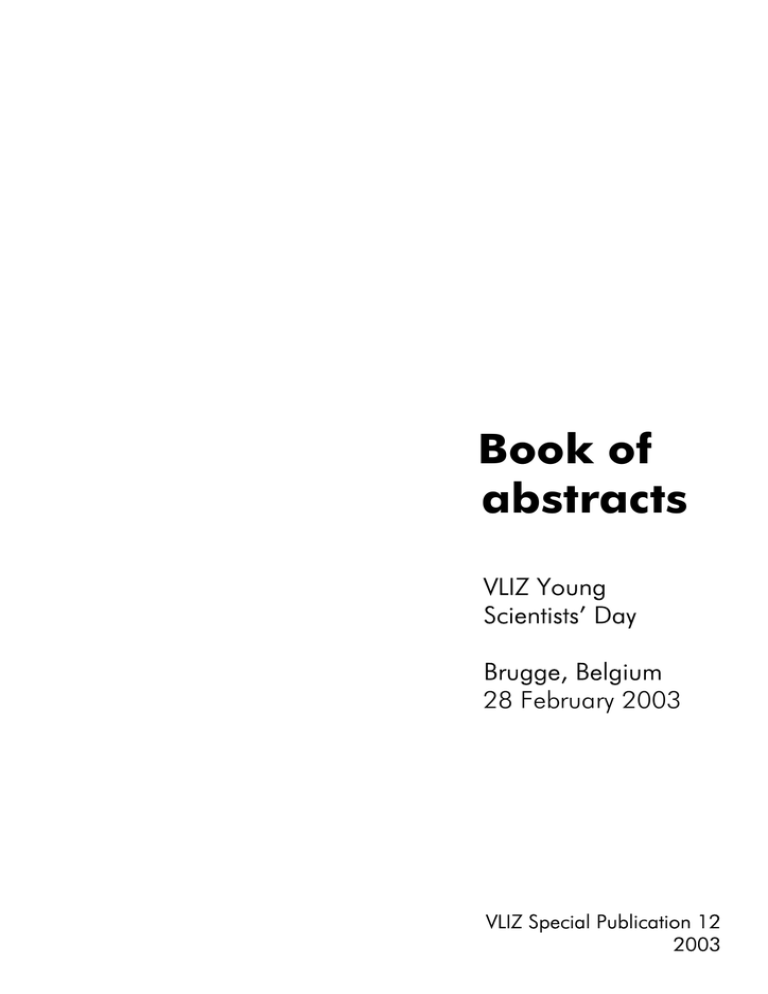
Book of abstracts VLIZ Young Scientists’ Day Brugge, Belgium 28 February 2003 -i- VLIZ Special Publication 12 2003 BROMINATED FLAME RETARDANTS IN BENTHIC ORGANISMS OF THE BELGIAN NORTH SEA AND THE SCHELDT ESTUARY Voorspoels Stefan, Tinne De Mey, Adrian Covaci and Paul Schepens University of Antwerp, Toxicological Centre Universiteitsplein 1, B-2610 Wilrijk, Belgium E-mail: stefan.voorspoels@uia.ua.ac.be Polybrominated Flame Retardants (BFRs), and especially Poly Brominated Diphenyl Ethers (PBDEs) have received an increased attention during the past years. Their massive use to improve fire safety in both domestic and commercial products, implicates also that these compounds are found in the environment. Monitoring and analytical studies have revealed continuously increasing levels of PBDEs in all environmental compartments, as well biotic (from plankton to humans) as abiotic (air, water, sediments, soil).1 Toxicological studies have demonstrated that BFRs can cause serious health effects such as thyroidogenic, estrogenic and dioxin-like activity.2 Their physico-chemical properties, as they are lipophilic and extremely resistant to degradation, leads to enrichment throughout the food chain. Humans are on top of the food chain, being thus able to accumulate high levels of these compounds through the diet. In this work, three benthic species from 16 locations in the Belgian North Sea (BNS) and the Scheldt Estuary (SE) were analysed for their contamination with PBDEs, namely Gudgeon (Pomatoschistus minutus), Flying Crab (Liocarcinus holsatus) and Red Starfish (Asterias rubens). Individual organisms were pooled by location and species, and subsequently homogenised before analysis. Based on reported abundance3 and toxicity1,2, the following BDE congeners (IUPAC numbering) were targeted for analysis: 28, 47, 99, 100, 153, 154 and 183. Polybromobiphenyl (PBB) 103 was used as internal standard. The analysis method consisted of Soxhlet extraction, followed by acidified silica clean up and final determination by GC/MS.4 For all species analysed, a clear concentration trend is present. Samples from the BNS displayed total PBDE concentrations between 0.25-1.80 ng/g wet weight (ww), while the levels in the SE samples ranged from 1.18-29.92 ng/g ww. The concentration increased rapidly when samples were taken more upstream the Scheldt. This is in accordance with previous studies and is probably related to a flame retardant manufacturing plant located at Terneuzen, to the upstream textile industry, in which BDEs are being used, and/or to the intense industrial activity in the Antwerp harbour. BDE 183 could not be detected in any of the samples. Total BDE levels were slightly higher in the area around the Zeebrugge harbour (BNS). This can be caused by local industrial activity, but is more probably due to the effect of the Scheldt outflow plume. BDE 47 is clearly the major contributor to the contamination profile. Its percentage ranges from 53% to 74%. This is in good accordance with data of benthic species presented by Ikonomou et al.5 An important change in profile is noted between the BNS and SE samples 1 De Wit C. (2002) Chemosphere, 46 (5), 583-624. Bergman A. (2000) Organohalogen Compounds, 47, 36. 3 Allchin C., Law R. and Morris S. (1999) Environ Pollut, 105, 197-207. 4 Covaci A., de Boer J., Ryan J.J., Voorspoels S. and Schepens P. (2002) Anal Chem, 74, 790-798. 5 Ikonomou M.,Rayne S., Fischer M., Fernandez M. and Cretney W. (2002) Chemosphere, 46(5), 649-663. 2 - 60 - for congeners 99 and 100. The concentration of BDE 99 is relatively higher in the SE than in the BNS samples. The ratio BDE 99:BDE 100 equals 30:70 for the BNS samples, while a ratio of 60:40 can be noted for the SE samples. Similar ratios have been reported for biota in Greenland (30:70)6 and for Lake Michigan (60:40)7. The latter is known for its high pollution load. The authors wish to thank the VLIZ for their logistic assistance and Dr. A. Cattrijsse for his help with the sampling and species determination on board the ship. 6 7 Christensen J.H., Glasius M., Pécseli M., Platz J., Pritzl G. (2002) Chemosphere 47, 631-638. Asplund L., Hornung M., Peterson R.E., Turesson K., Bergman A. (1999) Organohalogen Compounds 40, 351-354. - 61 -
